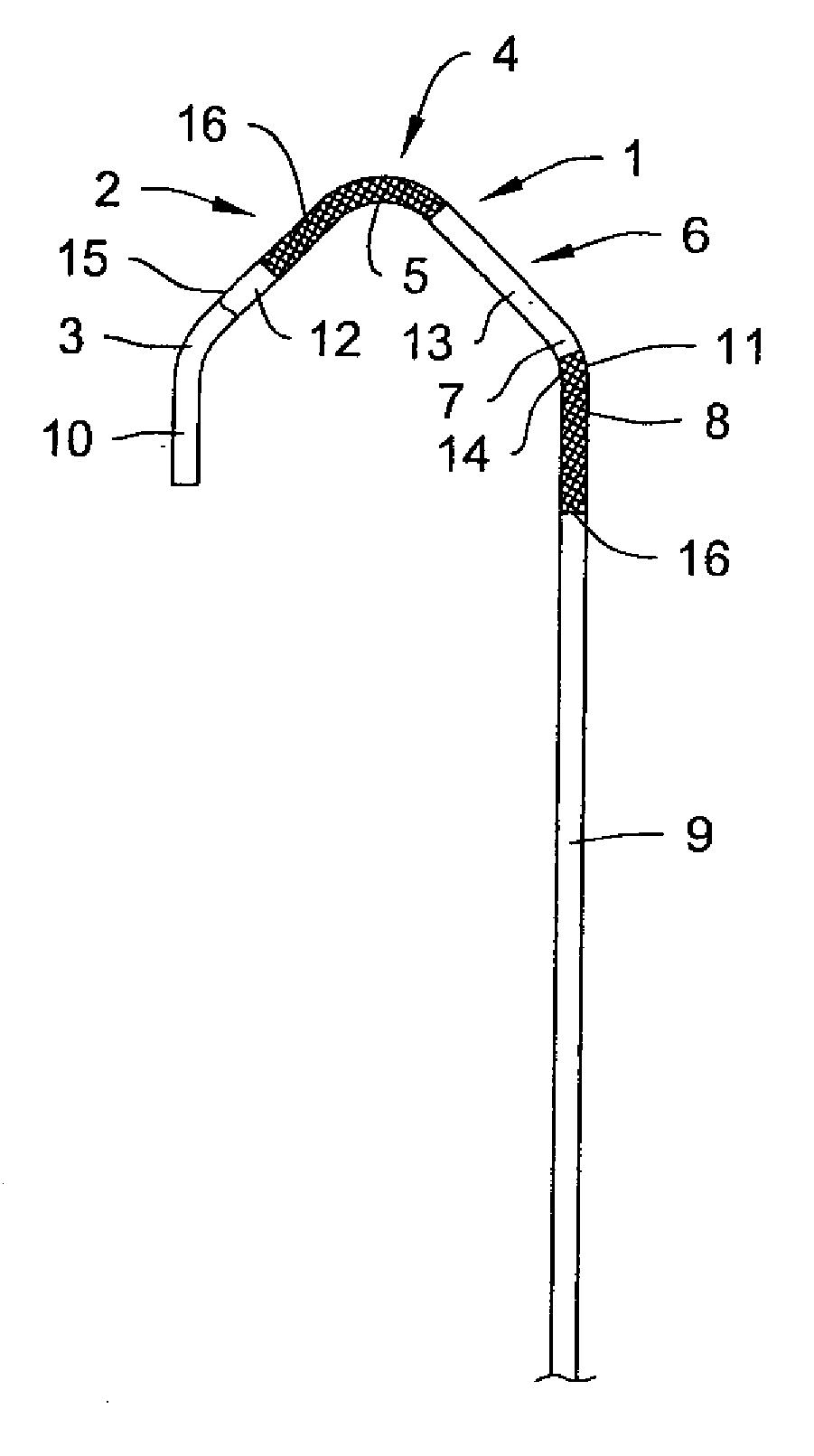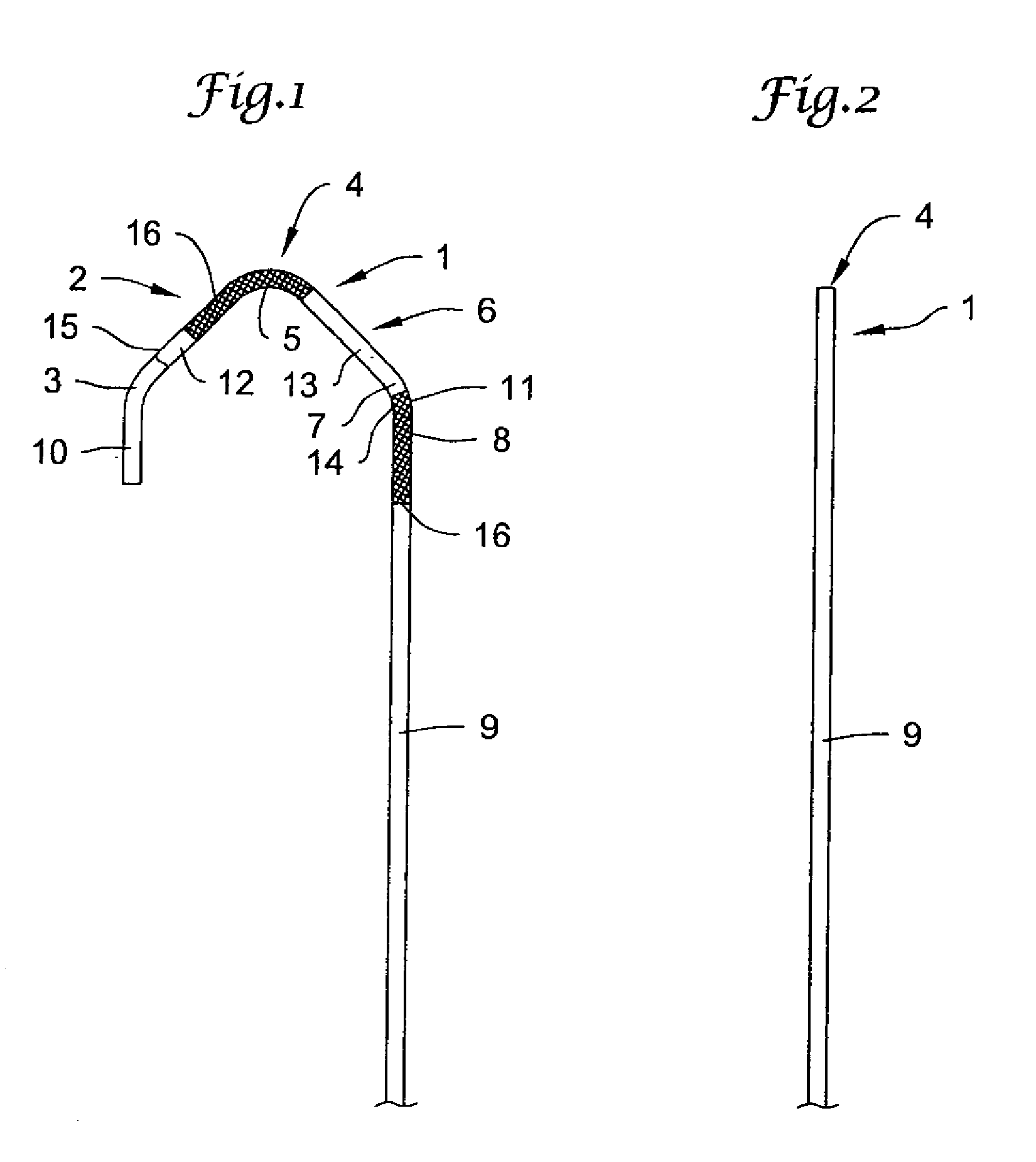Catheter for percutaneous transradial approach
a tubular catheter and percutaneous transradial technology, which is applied in the direction of catheters, guide wires, guide needles, etc., can solve the problems of relative lack of backup and coaxiality with the artery, the inability to precisely predict the effects of changes in the shape of the catheter, and the inability to manufacture specific catheters for this technique, etc., to avoid unnecessary costs, improve the percutaneous transradial approach to catheterization, and avoid unnecessary costs
- Summary
- Abstract
- Description
- Claims
- Application Information
AI Technical Summary
Benefits of technology
Problems solved by technology
Method used
Image
Examples
Embodiment Construction
[0022] The catheter shown in FIGS. 1 and 2 is tubular and comprises a distal bridge shaped portion 1 having a distal arch 2 defining a primary curve 3, a top 4 defining a secondary curve 5, and a proximal arch 6 defining a tertiary curve 7. The proximal arch 6 is connected to a distal end 8 of a straight shaft 9 the proximal end of which is fitted with the usual handling connector (not shown). The shaft 9 is stiff and the bridge shaped portion 1 has a flexibility extending at least up to and including the primary curve 3 and a stiffness extending at least up to and including the tertiary curve 7.
[0023] More specifically, the bridge shaped portion 1 comprises a first distal straight portion 10, a first primary curve 3 extending from said first straight portion 10, which primary curve has a concavity oriented towards the proximal end 11 of the bridge shaped portion 1. A second straight portion 12 extends from primary curve 3 and is inclined towards the proximal end 11 of the bridge s...
PUM
 Login to View More
Login to View More Abstract
Description
Claims
Application Information
 Login to View More
Login to View More - R&D
- Intellectual Property
- Life Sciences
- Materials
- Tech Scout
- Unparalleled Data Quality
- Higher Quality Content
- 60% Fewer Hallucinations
Browse by: Latest US Patents, China's latest patents, Technical Efficacy Thesaurus, Application Domain, Technology Topic, Popular Technical Reports.
© 2025 PatSnap. All rights reserved.Legal|Privacy policy|Modern Slavery Act Transparency Statement|Sitemap|About US| Contact US: help@patsnap.com



